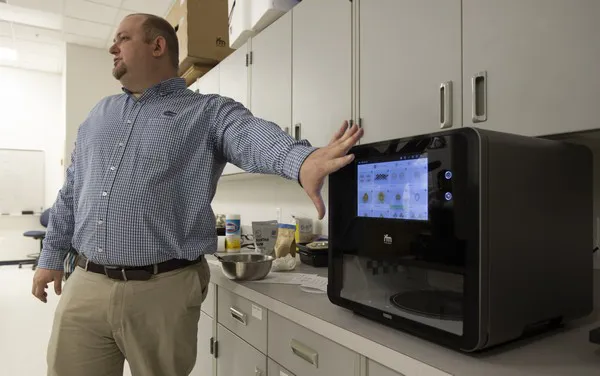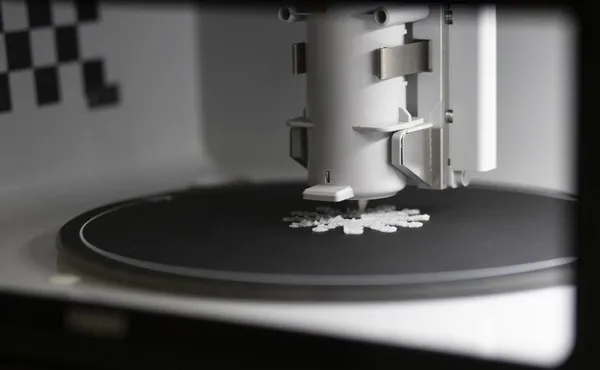3D printers for printing food?
Adam Watson and Ziynet Boz, two UF/IFAS professors in the agricultural and biological engineering department, are looking at the ability of 3D printers to print food.
One of these 3D printers sits in their lab and with one touch, an array of designs populate on the touchscreen. Once a design is selected, the mechanical arm begins to layer, starting with the base. Then, a viscous food substance like mashed potatoes is squirted out of cylinders until the design is completed.
With embedded stock designs and the ability to upload designs, an unprecedented level of control is possible for people looking to up their plating skills. However its benefits may extend beyond creative experimentation in food presentation.
 Watson demonstrates the 3D food printer. Photo: Tyler Jones
Watson demonstrates the 3D food printer. Photo: Tyler Jones
The machine may also be useful for those who suffer from dysphagia, or difficulty swallowing, who often rely on foods that are soft and moist like mashed fruits and vegetables. However, these foods can be unappetizing. With a 3D food printer, visual appeal can be brought back--a pureed carrot can be shaped to look like a regular carrot.
Additionally, 3D food printers may be used for humanitarian purposes, such as during times of war or famine. Dehydrated foods can be restored to their original state with the addition of water and be 3D printed into a design that revives the food’s appeal.
There are other benefits as well. 3D food printers also give people the ability to choose what goes inside the foods they eat. Instead of having to buy products with hidden fruits and vegetables, parents can make their own.
 A closer look at 3D printed food. Photo: Tyler Jones
A closer look at 3D printed food. Photo: Tyler Jones
With a 3D food printer, people also have more control over their food waste. Leftover viscous foods can be put into the 3D food printer for a new shape that is both appealing and sustainable. Leftover food can also be printed into tableware. Like bread bowls, a viscous substance like mashed potatoes can be shaped into a cup, cooked and used to serve food. “If you have edible tableware, it eliminates the need to wash dishes, which leads to less water being used,” Watson said.
While the machine reflects technological advancements in food, there are still advancements to be made, one being the ability to cook food while/after printing to save time on food preparation. Another is getting 3D food printers to the point where they’re affordable, common and useful.
Students in Boz’s class, unit operations and process design are helping envision that future. In the courses, students learn not just the machine’s ability to change a food’s form but also its ability to reconstruct food. “We do experiments with various compositions of water or xanthan gum, a thickening agent to ensure the viscosity of the food,” Boz said.
 For more information:
For more information:
Samantha Murray
UF/IFAS
Tel: +1 (949) 735-1076
https://ifas.ufl.edu/
